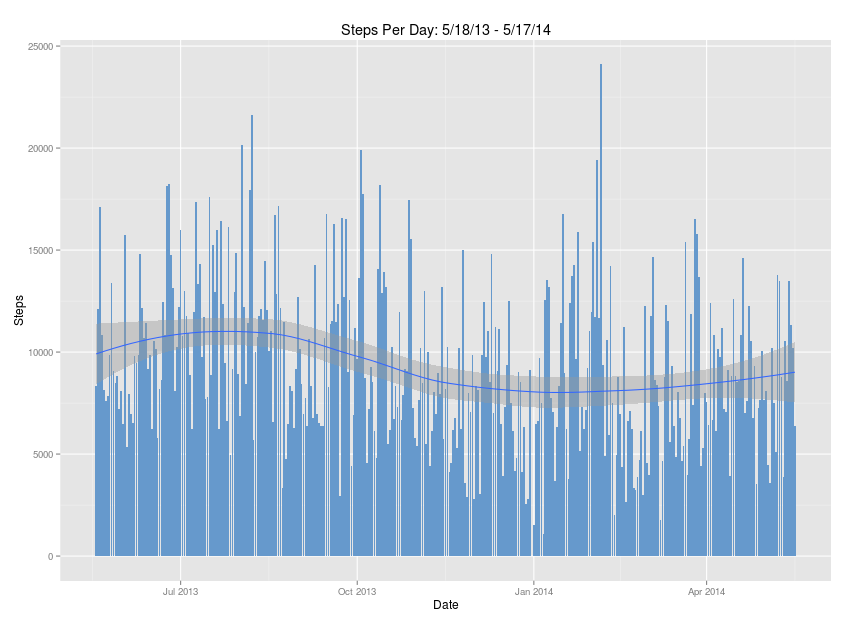A year ago this month, Kate and I bought our first house together. Ultimately we’re planning for a very different configuration, but at the moment it’s a pretty standard single floor ranch. Though the original part of the house dates back to the seventies, we were pleasantly surprised when our inspection revealed that the property was both well insulated and included a furnace of recent vintage – albeit one that ran on expensive fuel oil.
The big problem with these two findings is that neither was true.
This past winter was hard on everyone, and compared to many, we don’t have much to complain about. So let me complain about the size of our heating bills. First, because the furnace was (theoretically) current and therefore efficient. Second, because we had locked in at a price that was $0.20 less than what heating oil eventually peaked at. Third, because we had invested ahead of the heating season in Nest thermostats to help maximize our savings. And last, and most importantly, because we keep our house cold. Not as cold as these guys, but cold. During the week, our program for the Nest is simple: we keep the house at 50 degrees except for an hour in the morning and three or four at night – when we splurge and bump the heat up to 60. Weekends are a little more liberal for obvious reasons, but we were in the top 25% of Nest users every month of the winter in terms of relative efficiency, and the top 15% for two.
While oil is expensive then, we didn’t expect to be paying hundreds and hundreds a month to keep the house just this side of a meat locker. In spite of the horrific nature of the winter.
Which helps explain why we engaged the services of an energy auditor (DeWitt Kimball out of Brunswick, whom I highly recommend). He delivered the first piece of bad news: our adequate insulation situation was considerably less adequate that we had been told. Attics, for example, have a recommended R factor of 40+. Ours was, charitably, in the high teens. Which doesn’t factor in the other various insulation failures we have in a few older windows, the basement door and so on. According the blower test, our house places in the top third of “leaky” homes. We were paying all season, therefore, to heat the outdoors. Which we’ll be addressing by insulating. Heavily.
The far more expensive problem, however, was one we discovered prior to our audit. The oil furnace we thought had been installed in 2005 actually dated – by serial number – to 1992. Our primary heat source, in other words, was 22 years older than we had believed. 22 years less efficient.
The auditor’s recommended solution for heating issue was to keep the oil furnace in place, but to complement it with a “ductless mini-split heat pump,” which are generically referred to as heat pumps or heat exchangers. Popular in both Asia and Europe, these systems are hyper-efficient because they don’t actually use energy to create heat, they simply move it from one place to another – much as your refrigerator does. If a propane furnace is 80 something percent efficient and an oil furnace 90ish (due to the nature of the two fuels), a heat pump is closer to 250% efficient. Couple that with the fact that electricity in Maine is much cheaper on a relative basis than fuel oil – and potentially can be generated on premise were we to invest in solar – and the heat pumps appeared to be a perfect solution. Oh, and you can reverse the direction of the heat exchange and use them as air conditioners in the summer.
The most obvious downside of heat pumps, the fact that they perform less efficiently as the temperatures decline – eventually ceasing to function well below zero – would be a non-issue for us as we already have an auxiliary heat system in place for the few days we see real, deep cold. For most of the winter when the temperatures are 20 degrees fahrenheit and above, we could heat the house using the cheaper and more efficient heat pump. For the day here or there that it got seriously below zero, we could fall back on the oil furnace.
The more I read about heat pumps, the better they sounded. One guy on Martha’s Vineyard heated his house for a year for the grand total of $250 – a fraction of what we paid per month. Another from Presque Isle, almost as far north as you can go in Maine without being in Canada, estimated that he’d save $1,000 a year.
And yet there’s effectively no chance we’ll invest in the technology this year. Why? Because their interfaces are entirely proprietary.
When doing the initial research, I assumed that if there was a problem integrating heat pumps into our existing infrastructure, it would be with our two Nest units. But as it turns out, Nest is more than capable of working with heat pumps as well as an auxiliary heat source like our oil furnace. Called “Heat Pump Balance,” it essentially allows you to use the heat pump until the outside temperature renders it inefficient, then kick in a backup. Perfect.
Except for the fact that, as nearly as I can determine, the best and most efficient heat pumps – manufactured by Fujitsu and Mitsubishi – cannot be integrated into existing thermostat systems, Nest or otherwise. This was the response I got from Fujitsu when I asked about whether their system could be integrated with the Nest or even a standard thermostat:
Our systems can only work with our controllers, they cannot be controlled with the Nest thermostat. At this time there is no way to connect it to the Nest unfortunately.
Essentially, these heat pumps have to be installed as a completely separate system, one entirely independent of your existing HVAC infrastructure – Nest or otherwise. The only way to control the devices is with specialized equipment supplied by the vendor. Which means that we would have two independent, unintegrated heating control systems. Honeywell customer support described the situation to one Mitsubishi customer as follows:
The MIFH1, although built by Honeywell, uses a proprietary Mitsubishi communication protocol to translate and transfer commands between the Mitsubishi equipment and the RedLink enabled products that can also be used with it.
In other words, Mitsubishi’s integration with Honeywell’s Redlink system is a one-off, non-standard connection. Unlike virtually every other piece of HVAC equipment you could buy – air conditioners, gas/oil/propane furnaces, etc – heat pumps cannot leverage standardized thermostat connections. Even if said thermostat, like the Nest, has built-in, native support for heat pumps.
It is somewhat ironic that the most state-of-the-art, technologically sophisticated heating system currently available is unable to integrate with something as basic as a thermostat, but that is the current reality. Which means in turn that as a potential customer, I’m being asked to invest thousands of dollars in a product that cannot be controlled remotely, cannot be leveraged in conjunction with other heating systems, and can’t report telemetry back to somewhere I could use it.
But maybe the real irony is that I won’t invest in these technological marvels for lack of such basic functionality. Even if I could make two independent heating systems work together, I’d be kicking myself next year, or the year after, or whenever Fujitsu, Mitsubishi et al figure out that people want their heating and cooling systems to a) be aware of one another and b) work with each other. It may cost us in the short term with higher heating bills, but it certainly beats paying for heat pumps now, and then again later when the vendors have seen the light and let them work with our Nest units.
In the (hopefully) likely event that Fujitsu and Mitsubishi eventually see the light, my message to them would be simple.



